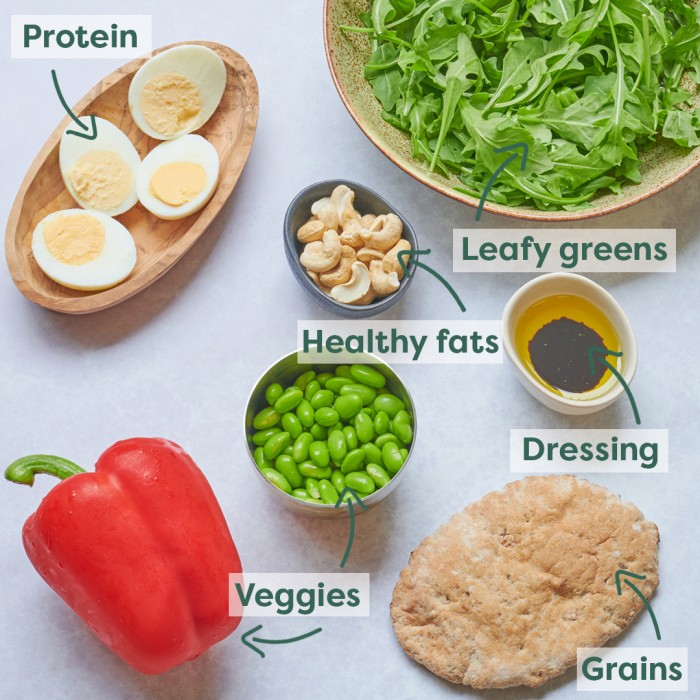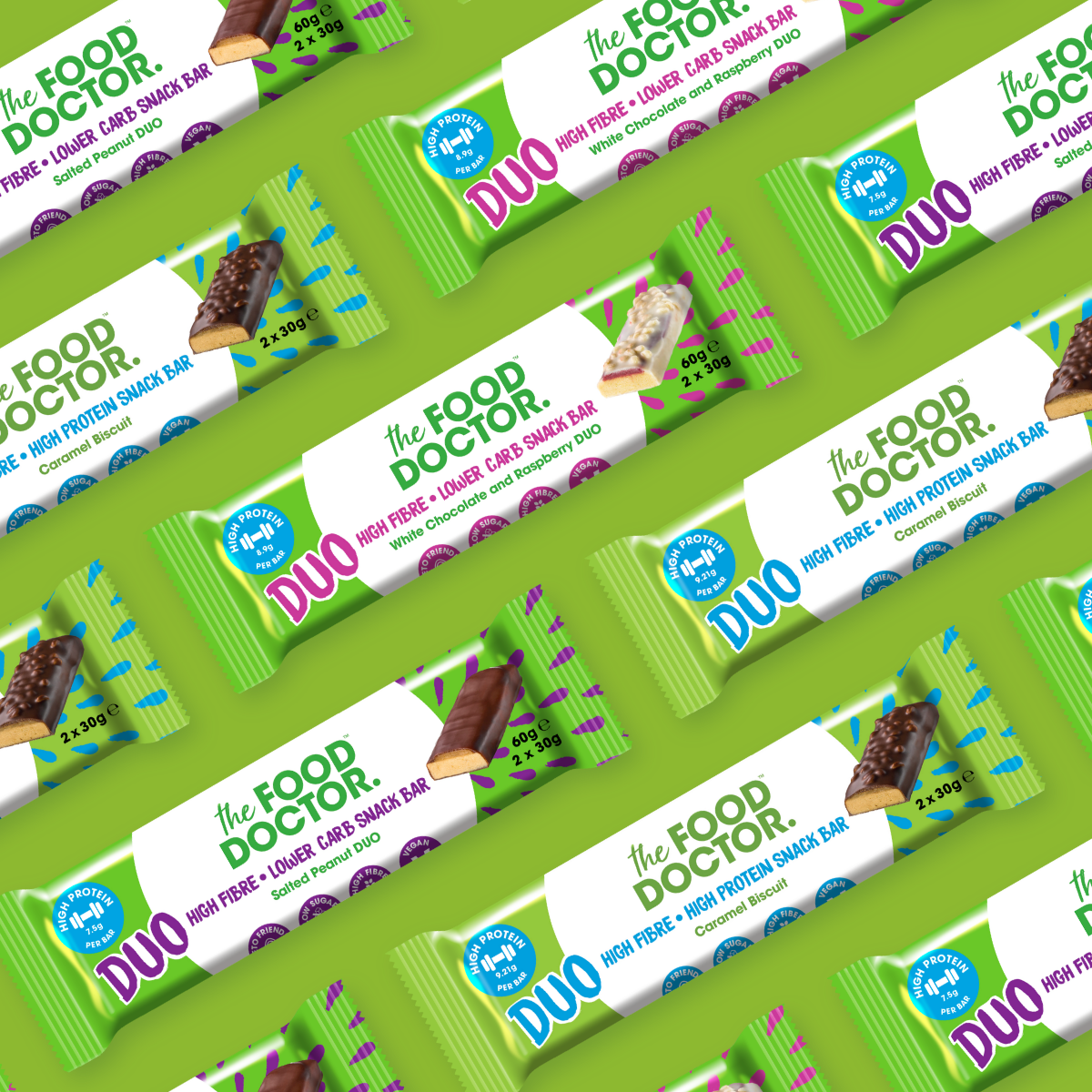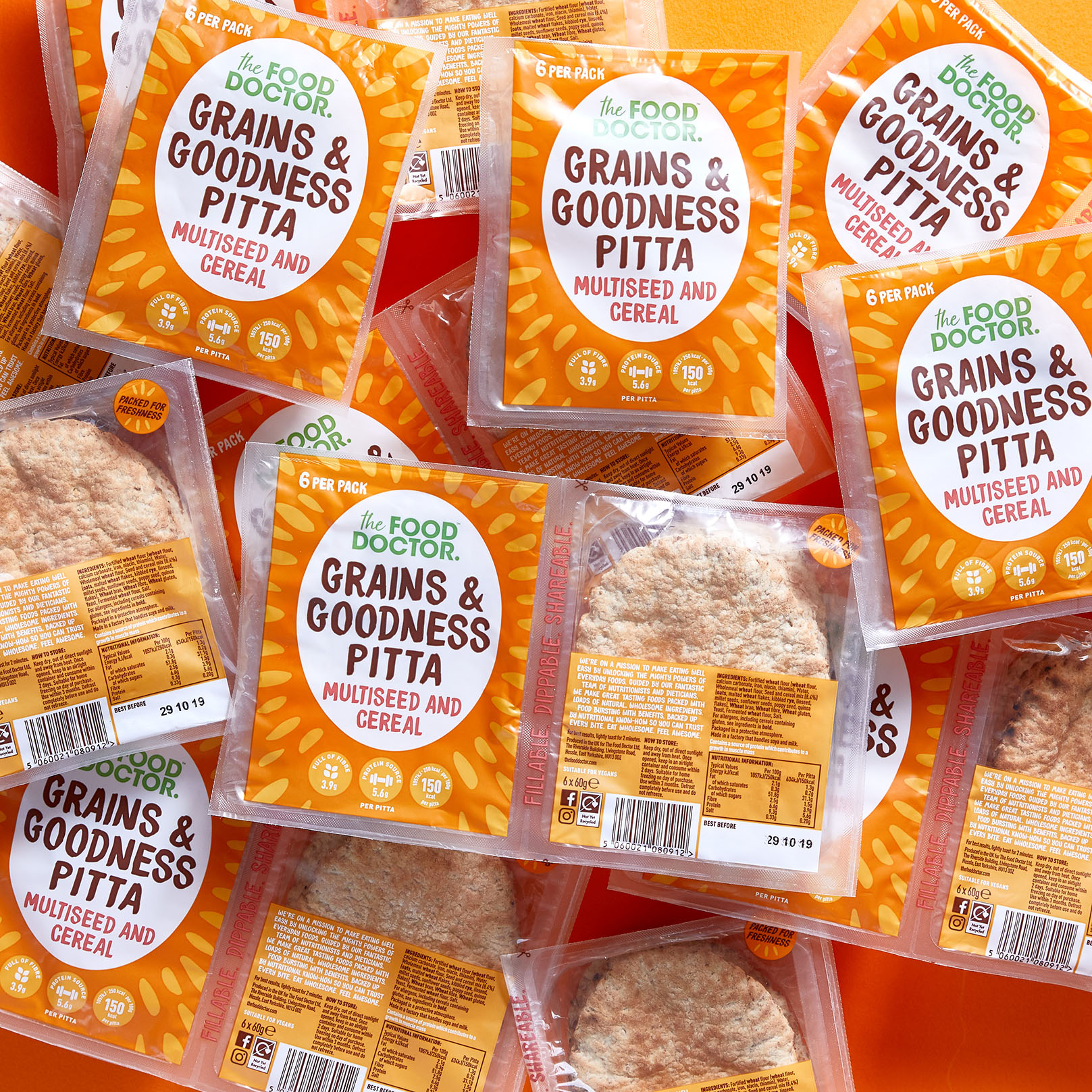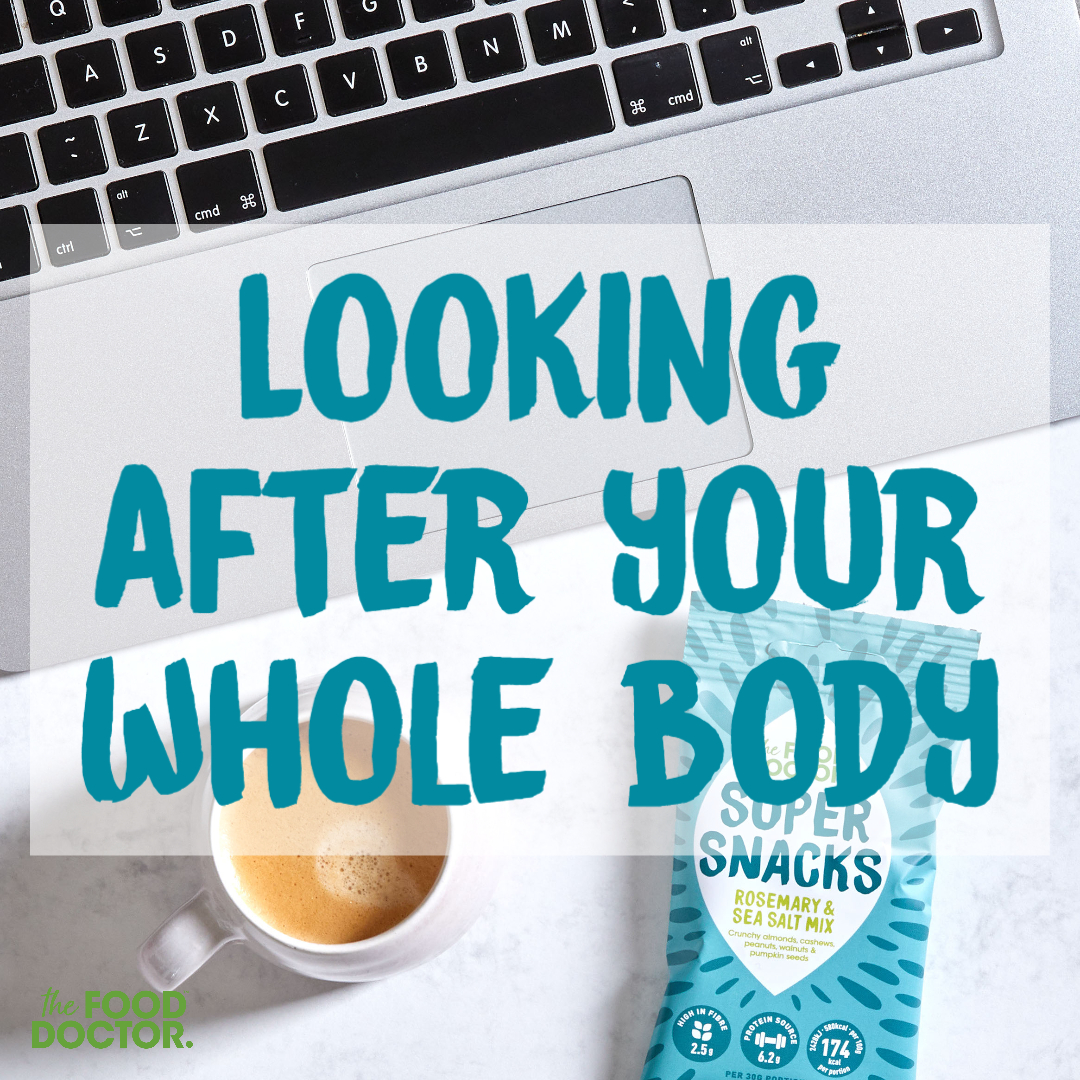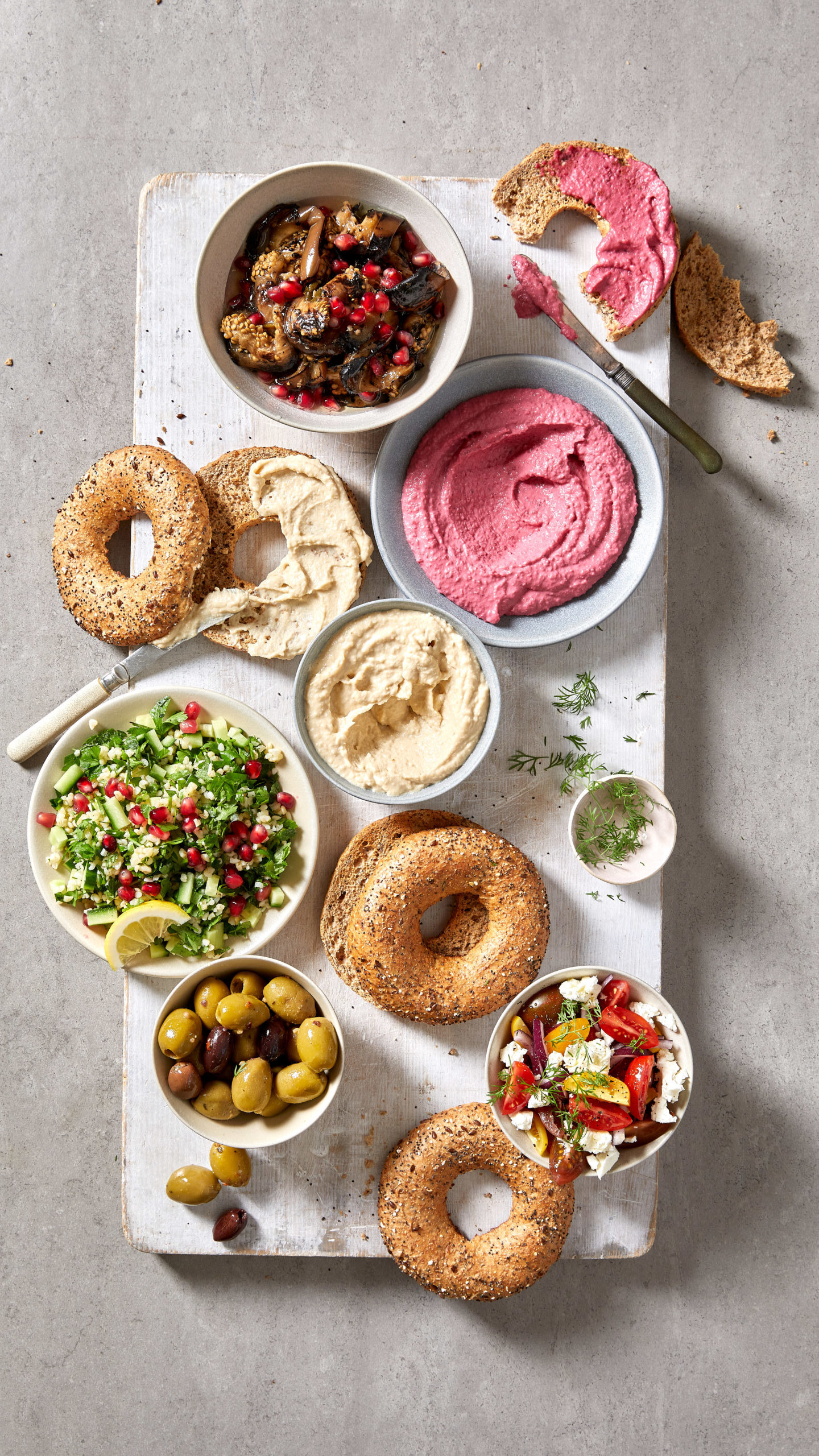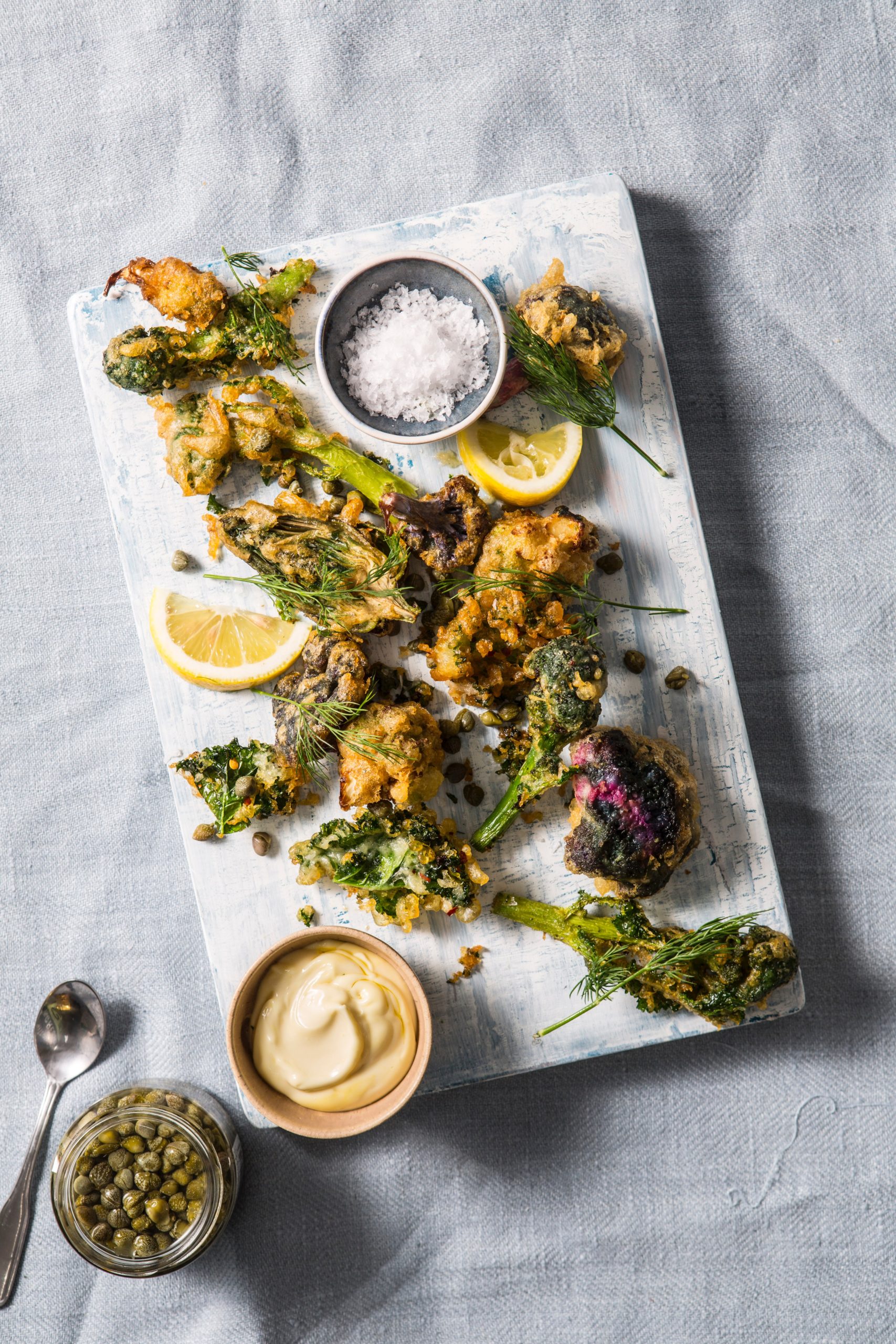Now that the weather is warming up, salads are back in season. Salads are a great way to pack lots of leafy greens and veggies into your meal, and you can easily chuck them together with leftovers or whatever you’ve got in your fridge. Follow our 7 steps for building the perfect salad, and ensure that your salad is packed with goodness and keeps you feeling full.
1. Leafy greens
A salad wouldn’t be a salad without a handful or two of leafy greens. Our favourites are spinach, kale and watercress as they are nutrient dense but you can also choose rocket, little gem, pea shoots, romaine, iceberg and radicchio. Often the darker the leaves the more phytonutrients they contain.
2. Grain
Do you sometimes feel like your salad doesn’t fill you up enough?
Including a grain in your salad helps to make your salad more substantial and keeps you feeling fuller for longer, plus it adds texture. You could include a wholegrain like brown rice, quinoa, bulgur wheat, spelt grains, pearl parley and wholewheat couscous, or serve the salad with a slice of wholegrain bread or pitta bread. Wholegrains are a good source of fibre (healthy digestion), B vitamins (breakdown and release energy from food) and magnesium (muscle and nerve function), and quinoa is a high quality protein as it contains all the essential amino acids.
Other foods you could include that contain fibre to help keep you full include beans (chickpeas, kidney, butter beans), lentils or sweet potato.
3. Veggies (and fruit)
Adding lots of vegetables helps to boost the nutrient content of your salad. Try to include a rainbow of colours as this is a good way to ensure you’re getting a variety of vitamins and minerals.
If you’re having a salad for lunch, cook extra veggies for dinner the night before and use them in your salad. Roasting vegetables like sweet potato, butternut squash, peppers, aubergine, courgette, asparagus and tenderstem broccoli, helps to give the veg a lovely chargrilled flavour which tastes great in salads. You could also include raw veggies like carrot, red cabbage, tomatoes, cucumber, spring onion, sugar snap peas, red onion, precooked beetroot, and fruits like orange slices, mango, blueberries and apple.
4. Protein
A protein such as salmon or feta cheese is often the most popular ingredient in a salad but it’s actually a very important component. It’s essential in our diet to help the body grow and repair, and in a salad it helps to keep us feeling full.
Foods contain different amounts and combinations of amino acids (the building blocks of protein). Animal products like meat, fish, eggs and dairy contain all the essential amino acids and are therefore considered a ‘complete’ or ‘high quality’ protein. Other sources of protein like beans and lentils lack one of these amino acids but when paired with a wholegrain like bread or rice, they help to deliver the body all of the amino acids.
Our favourite salad proteins include chicken, turkey, flaked salmon, mackerel, crab, prawns, feta, goat’s cheese, cottage cheese, hard boiled eggs, edamame beans, butter beans and Puy lentils.
5. Healthy fats
Fats help to provide the body with essential fatty acids that we cannot produce ourselves such as omega 3’s. They help the body absorb the fat soluble vitamins A, D, E and K, and unsaturated fats help to lower the ‘bad’ LDL cholesterol and maintain the ‘good’ HDL cholesterol in the body, which reduces the risk of heart disease.
Sources of healthy fats include avocado, nuts like walnuts, cashews and almonds, seeds such as sunflower, pumpkin and linseed and oils like extra virgin olive oil. Avocado also helps to add a creamy texture to a salad and the nuts and seeds add a crunch.
6. Garnishes
Topping your salad with a garnish helps to add another dimension to your salad. This could include fresh herbs like basil, parsley and coriander, chilli flakes, olives, nuts and seeds. Croutons are usually made with refined bread and soaked in oil, but you could make your own using The Food Doctor pitta breads and a small amount of extra virgin olive oil.
7. Dressing
A salad deserves a good dressing but often shop bought ones contain lots of ingredients like refined sugar, salt, thickeners and preservatives, which adds lots of calories, fat and sugar to a salad. Homemade dressings can add valuable nutrients to your salad such as the healthy fats found in extra virgin olive oil and tahini. You may want to adapt your dressing depending on what type of salad you’re having but our favourites are:
• Olive oil and balsamic – 3 parts extra virgin olive oil to 1 part balsamic, apple cider, or lemon juice. You can then spice it up with fresh or dried herbs, chilli, Dijon, garlic, toasted nuts, salt and pepper.
• Garlic and lemon Yogurt – Greek or natural yogurt with fresh lemon juice, crushed garlic, drizzle of extra virgin olive oil, fresh herbs like mint and a pinch of salt and pepper. You can turn it into a Greek Tzatziki sauce by adding some fresh cucumber.
• Lemon tahini – tahini with lemon juice, apple cider vinegar, garlic, salt and pepper.
Share
